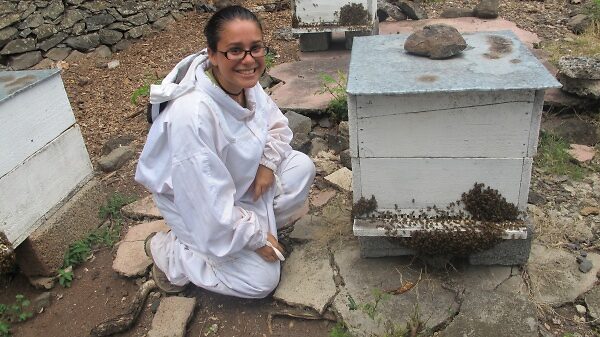Seminar "Genetic diversity and phylogeography of the honeybee Apis mellifera in the South West Indian Ocean islands" by Dr. Maéva Techer

Date
Location
Description
Ecology and Evolution (Mikheyev) Unit would like to invite you to a seminar by Dr. Maéva Techer
===============================
Date: Monday, April 11th, 2016
Time:10:00-11:00
Venue: Seminar Room C016, Lab1
===============================
Speaker: Maéva Techer, Ph.D. Population Genetics & Ecology, Université de La Réunion
Title: " Genetic diversity and phylogeography of the honeybee Apis mellifera in the South West Indian Ocean islands".
Abstract:
The South West Indian Ocean (SWIO) islands are home to an exceptional flora and fauna and are considered as one the five most important biodiversity hotspots in the world. In most islands of this region, the honeybee Apis mellifera occupies diverse habitats. A. mellifera is a model of diversity that has diverged into several lineages and subspecies in its native range. Among the 28 recognized subspecies, A. m. unicolor has been described as endemic to Madagascar and belongs to the African A lineage. The Mascarenes, Comoros and Seychelles archipelagos surround Madagascar but the honeybee populations established there have been little or never studied.
The aims of this study were to characterize the honeybee from the Mascarenes (La Réunion, Mauritius, Rodrigues), Comoros (Anjouan, Mohéli, Grande Comore, Mayotte) and Seychelles (Mahé, Praslin, La Digue) archipelagos by i) determining the evolutionary lineages and subspecies present (PCR-RFLP on COI-COII intergenic region); ii) assessing the genetic diversity and structure of insular populations using mitochondrial (sequencing of the COI-COII region and ND2 gene) and nuclear markers (15 microsatellite loci); iii) comparing with potential population of origin (Madagascar, Africa and Europe) to better understand the colonization and/or introduction patterns followed by the A. mellifera in the SWIO archipelagos. For that, a large sampling was carried in the SWIO islands (n = 4095 colonies) and also in native continental areas (n = 238).
Three of the four evolutionary lineages (A, C and M) were detected in different proportions in the 10 studied islands. The African A lineage and A. m. unicolor subspecies were predominant in the SWIO excepted for Rodrigues exclusively from the European C lineage. All sampled colonies from the Seychelles and Comoros archipelagos belong to the African lineage while in La Réunion the proportion reach 95.2% and only 54.2% in Mauritius. The presence of the Z African sub-lineage has been described for the first time out of Africa in two Seychelles islands. Moreover, Comoros islands may constitute a contact area between the continental African lineage and A. m. unicolor populations (insular African lineage). The SWIO populations show high levels of nuclear genetic diversity and a structuration by island and archipelago. In addition, SWIO populations strongly differentiated from African and European continental populations. The combined results from different molecular markers favor the hypothesis of an ancient and natural colonization from Madagascar to La Réunion, Mauritius and Seychelles islands.
We hope to see many of you at the seminar.
Sincerely,
Yoko Fujitomi
Ecology and Evolution (Mikheyev) Unit
Subscribe to the OIST Calendar: Right-click to download, then open in your calendar application.



